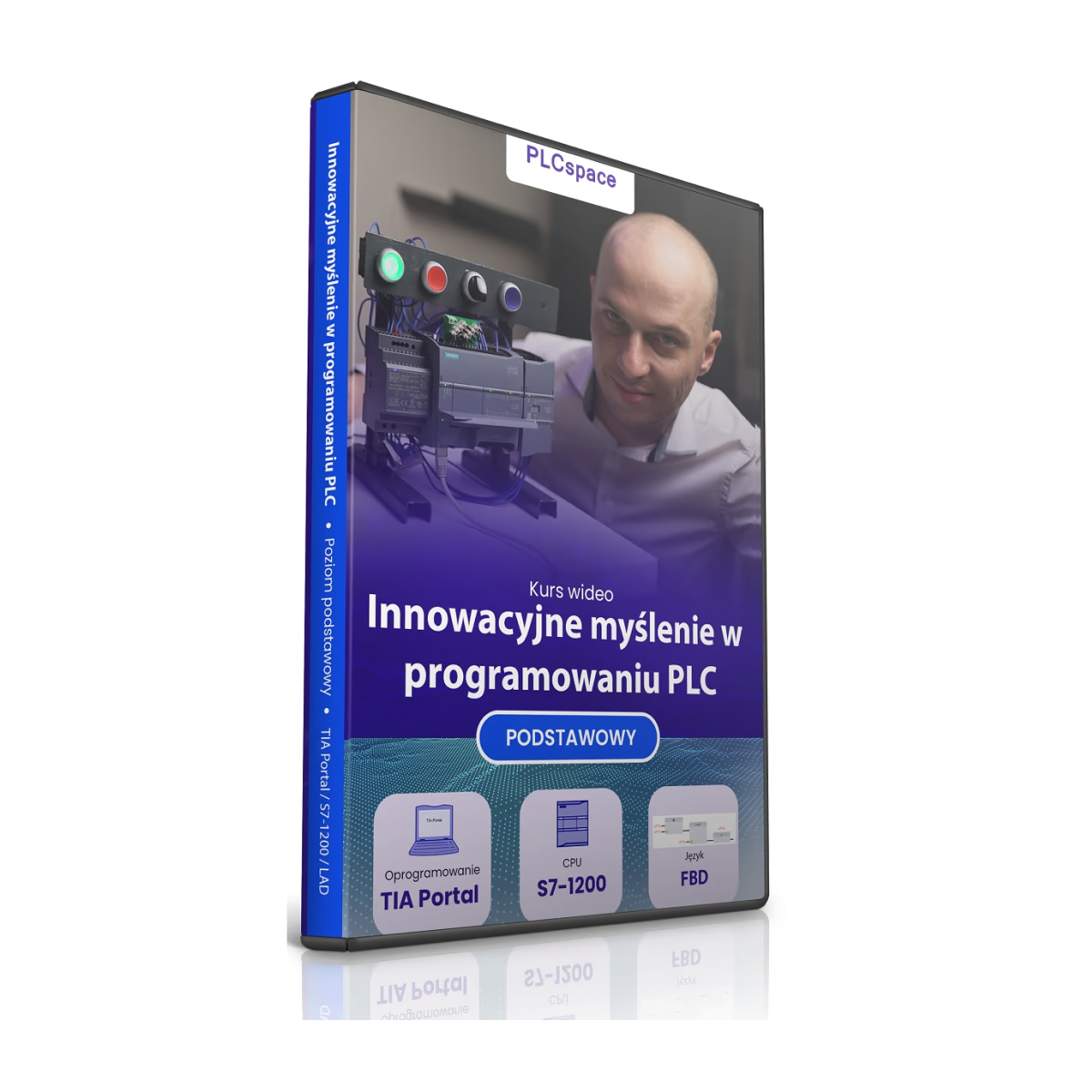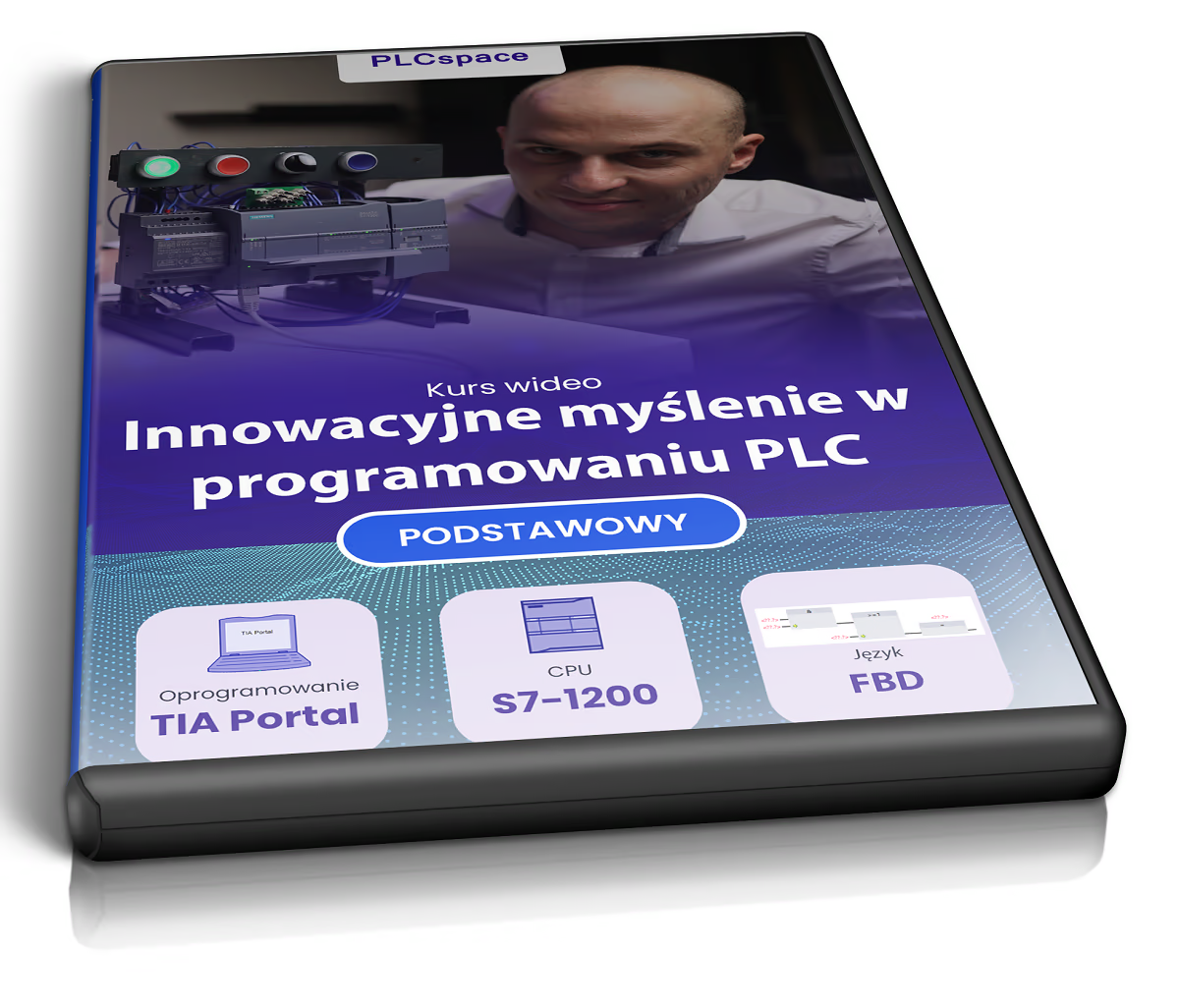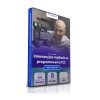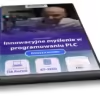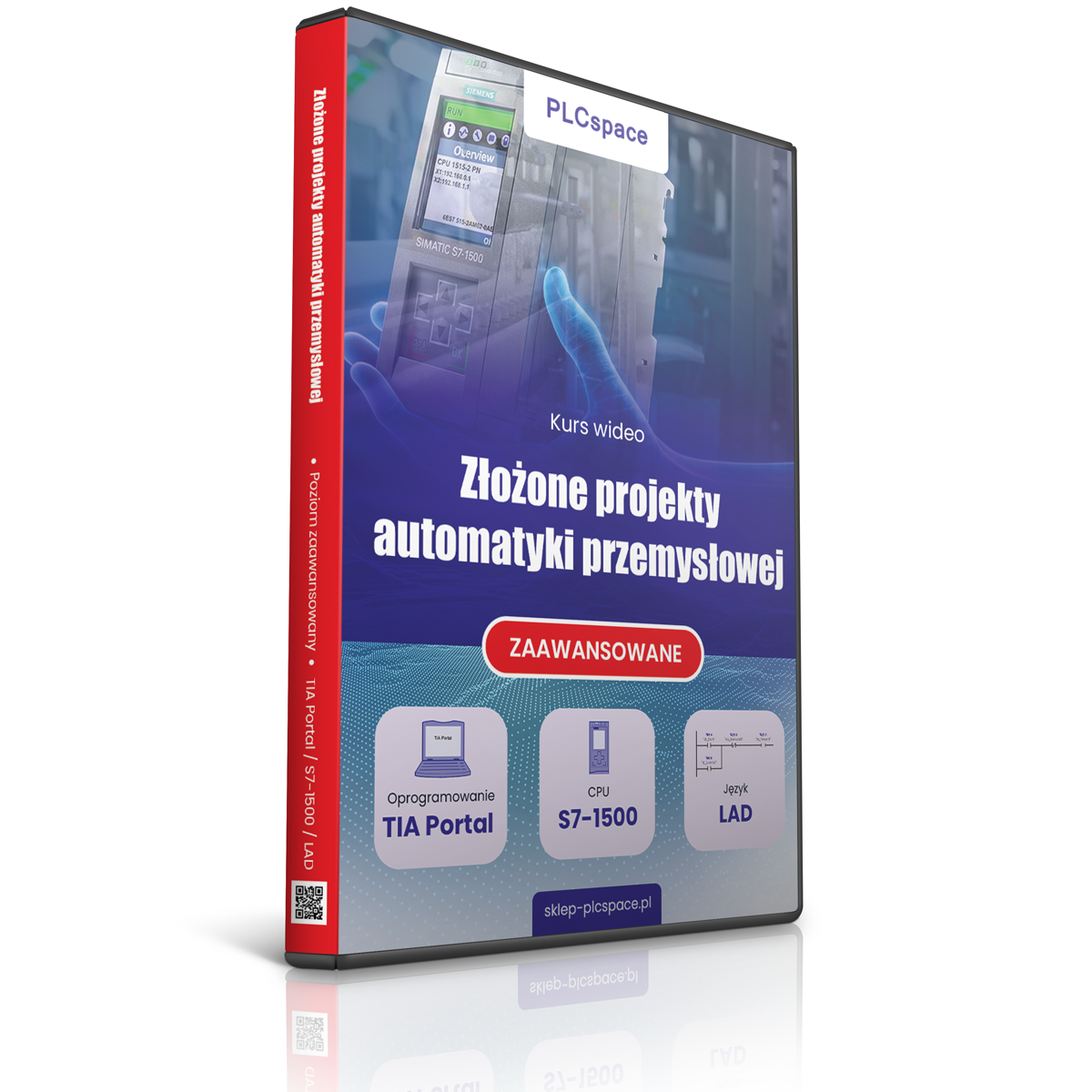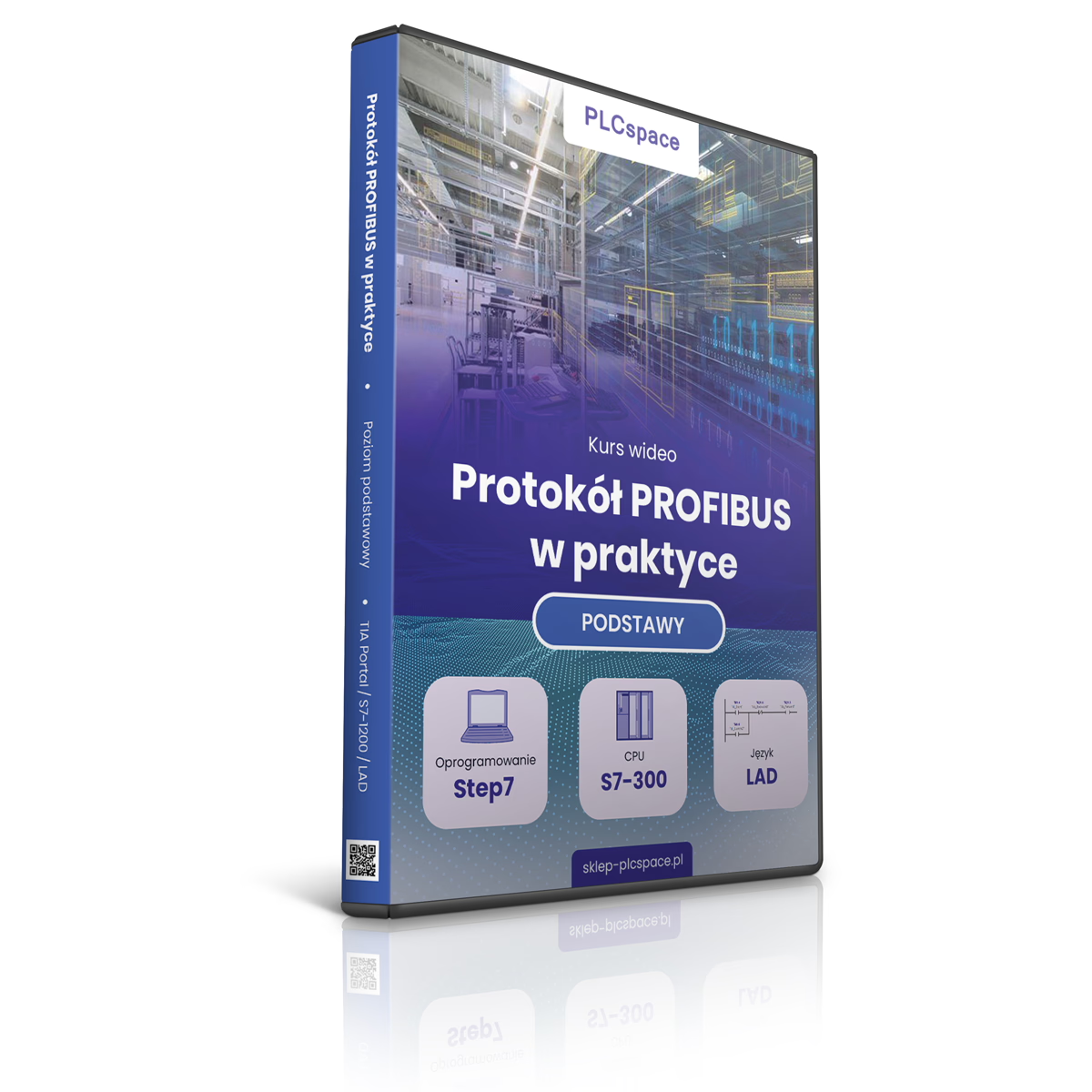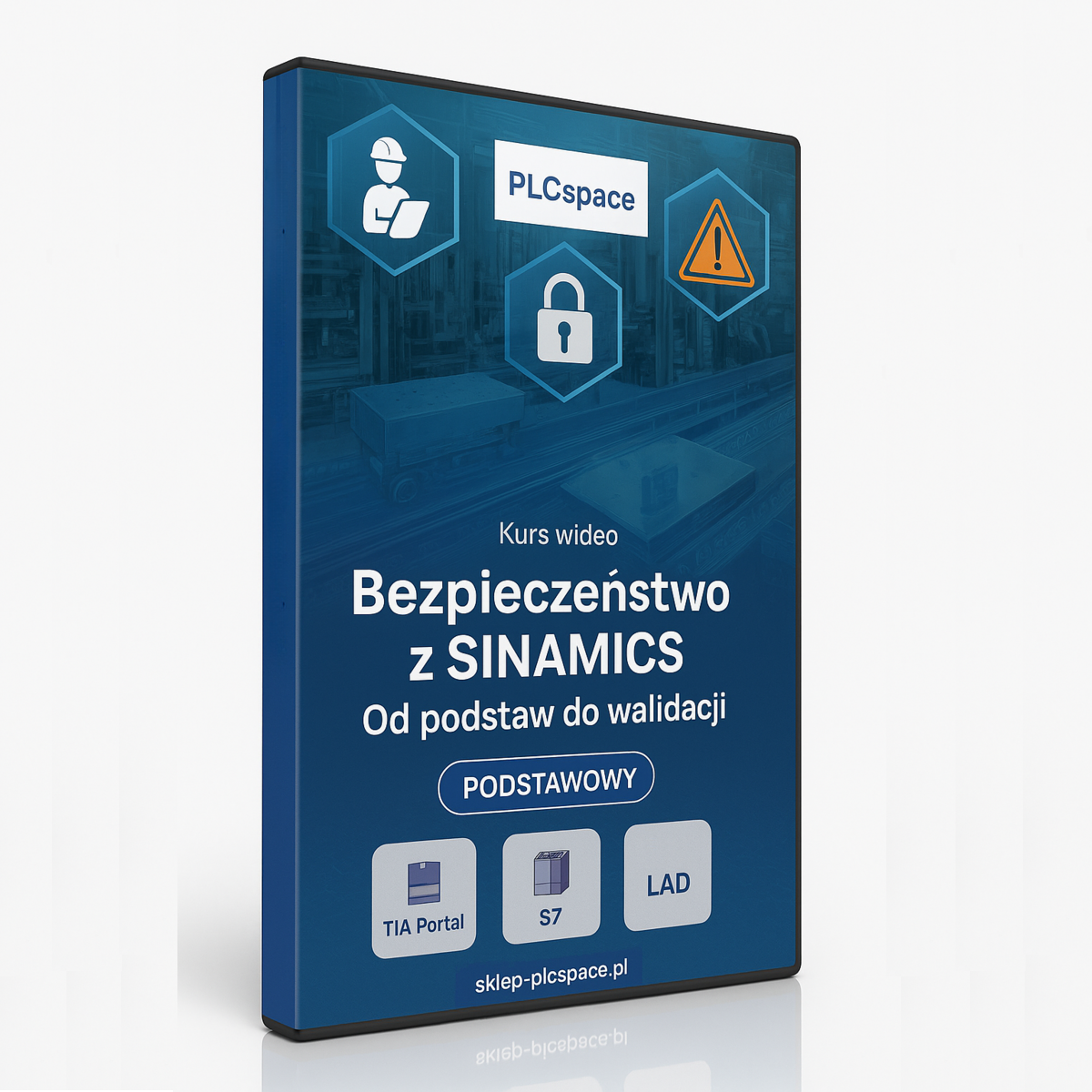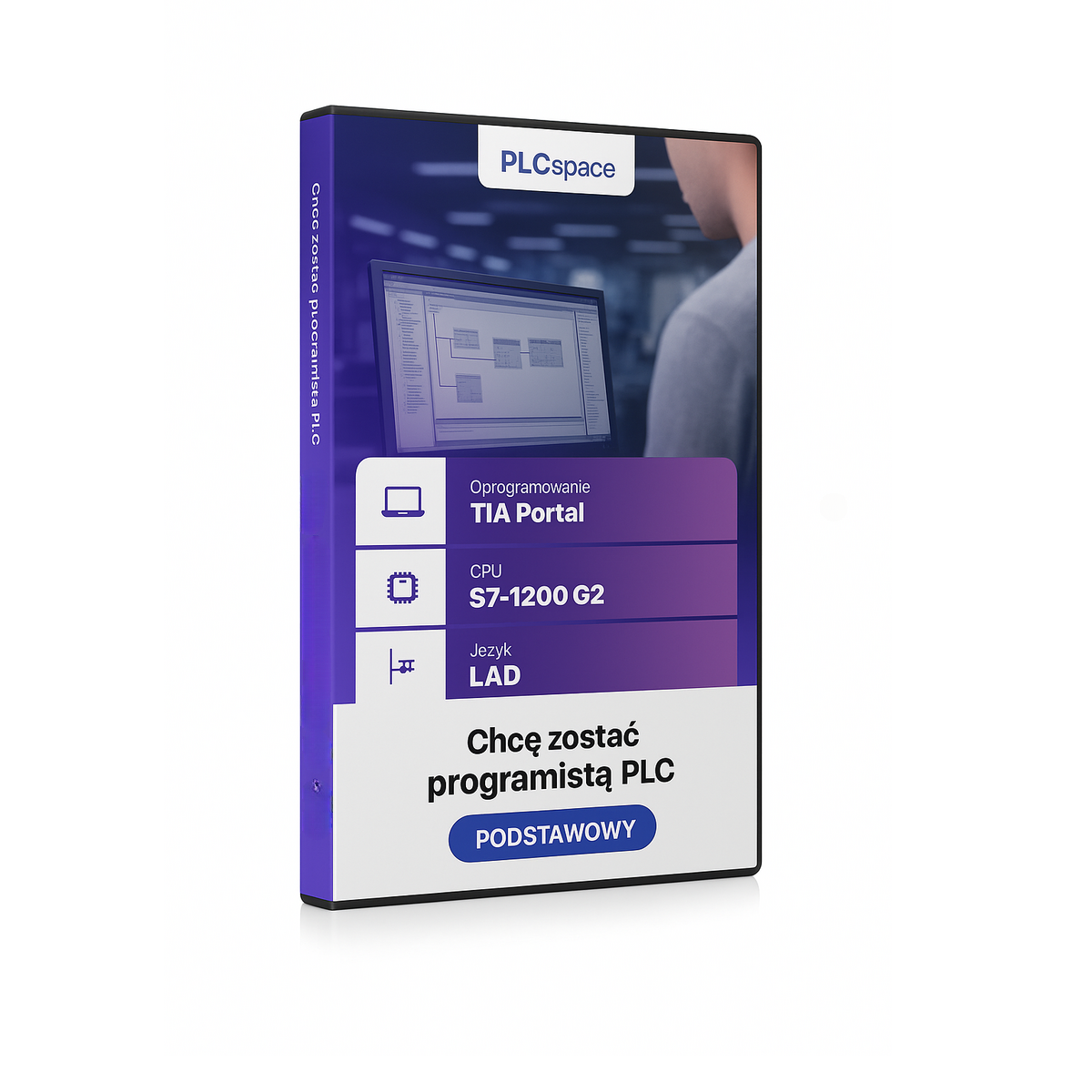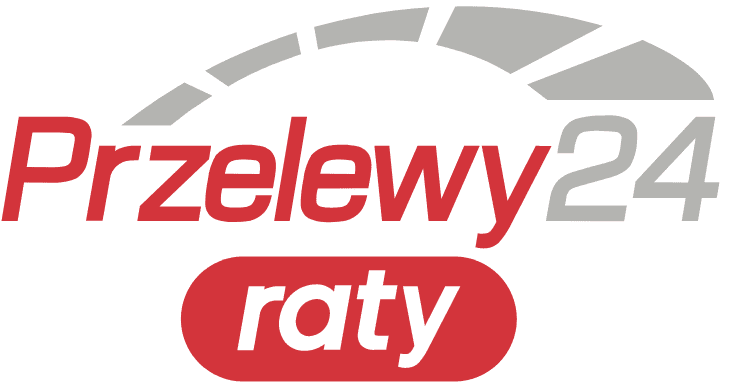Innovative thinking in PLC programming
- Level:
The development environment used in the course
- Software:
Core unit family used in the course
- CPU:
A set of rules that are used to develop programme code
- Language:
Frequency converter (inverter) family used in the course
- Drive
0.00 zł
What do you get when you enrol on a PLC programming course?
Nie musisz obawiać się, że będziesz bombardowany skomplikowaną wiedzą, której trudno będzie Ci się nauczyć. Nasz bezpłatny kurs programowania PLC SIMATIC S7-1200 w języku FBD został zaprojektowany tak, aby wprowadzić Cię w świat podstaw programowania sterowników przemysłowych. Jego głównym celem jest zapewnienie Ci solidnego fundamentu i zapoznanie z niezbędnymi umiejętnościami potrzebnymi do pracy z PLC. W ramach szkolenia otrzymasz:
Innowacyjne myślenie w programowaniu PLC. Kurs programowania PLC Siemens, poziom od zera – oprogramowanie TIA Portal
Zastanawiasz się czy programowanie PLC jest dla Ciebie? Nigdy nie programowałeś sterowników przemysłowych ? Dobrze trafiłeś, ten bezpłatny kurs został przygotowany specjalnie dla Ciebie. Poznasz najpopularniejszy sterownik firmy Siemens, jakim jest SIMATIC S7-1200.
O czym jest kurs programowania sterowników logicznych PLC Siemens SIMATIC S7-1200 w języku FBD?
Nasz bezpłatny kurs zapewni Ci wyczerpujące wyjaśnienie zagadnień związanych z automatyką i programowaniem PLC w języku FBD. Wykorzystamy popularny sterownik z rodziny SIMATIC S7-1200 oraz środowisko programistyczne TIA Portal. Nauczysz się jak prawidłowo podłączyć sprzęt elektryczny i zainstalować oprogramowanie. Zostaniesz wprowadzony w podstawy programowania sterowników PLC, gdzie praktycznie wykorzystasz fundamentalne instrukcje programistyczne. Ten kurs dostarczy Ci niezbędną wiedzę minimum w dziedzinie automatyki przemysłowej.
Knowledge test:
Is this course for you? Take this test MULTIPLE choice to check it out.
Key information about the course
As you complete practical tasks, you will see that programming is not as complicated as you might think.
W trakcie udziału w kursie wkroczysz w fascynujący świat przemysłu i zdobędziesz kluczowe informacje związane z tą branżą.
Zwiększysz swoją wiedzę, korzystając z doświadczenia innych programistów.
Poznasz narzędzie, które pozwoli Ci skonfigurować PLC, napisać kod programu i zaprogramować urządzenie. Na koniec zobaczysz efekt swojej pracy
Otrzymujesz pełne źródło wiedzy, co pozwala zaoszczędzić czas i uniknąć popełniania podstawowych błędów w pracy.
Dlaczego warto wybrać nasz kurs automatyki przemysłowej i programowania PLC w języku FBD?
W sieci/internecie możesz znaleźć wiele informacji na temat PLC i programowania. Ten kurs jednak wyróżnia się autorską metodą, opracowaną na podstawie długiego doświadczenia pracy z uczestnikami. Lekcje są starannie ułożone w logiczny ciąg, który zapewnia skoncentrowaną wiedzę praktyczną, minimalizując nadmiar teorii. Chcesz wiedzieć, czego się nauczysz podczas tego kursu? Poniżej przedstawiamy główne elementy programu.
Example lesson from the course
Jak wygląda szkolenie z programowania w języku FBD sterownika SIMATIC S7-1200 w środowisku TIA Portal?
Najważniejszą informacją jest to, że masz możliwość samodzielnego realizowania ćwiczeń na swoim własnym komputerze. Kurs został stworzony z myślą o wszystkich, niezależnie od poziomu wiedzy. Zaczynamy od fundamentów, które są niezbędne do zrozumienia tematu. Na bazie tych fundamentów prezentowane są różnorodne ćwiczenia, wraz z wyjaśnieniem ich rozwiązania. Dodatkowo, w kursie znajdziesz zadania, które zachęcają do samodzielnego rozwiązywania problemów.
Kurs programowania PLC Siemens Simatic S7-1200 składa się z pięciu modułów, z których każdy stanowi oddzielną sekcję tematyczną. Znajdziesz w nich szczegółowe informacje dotyczące każdego zagadnienia poruszanego w szkoleniu. Spis treści jest dokładnie opracowany, abyś mógł łatwo nawigować po kursie i świadomie wybierać interesujące Cię tematy.
-
Module 1 - downloading the development environment
- Lesson 1 - Registration on the Siemens website
- Lesson 2 - Which files to download
- Lesson 3 - Installation of the TIA Portal software
- Lesson 4 - Installing the PLCsim simulator
-
Module 2 - Licence
- Lesson 1 - Activating a TRIAL licence
- Lesson 2 - Activating a full (floating) licence
-
Module 3 - PLC programming
- Lesson 1 - First project and PLCsim programming
- Lesson 2 - Overview of the object/task
- Lesson 3 - Symbolic names
- Lesson 4 - Test of input/output signals
- Lesson 5 - Starting PLCsim from an existing project
- Lesson 6 - Assignment instructions
- Lesson 7 - AND instruction
- Lesson 8 - OR instruction
- Lesson 9 - Combination of OR and AND statements
-
Module 4 - Additional tasks
- Lesson 1 - Task 1
- Lesson 2 - Task 2
-
Moduł 5 - BONUS - Rzeczywisty PLC
- Lekcja 1 – Budowa zewnętrzna – wejścia/wyjścia
- Lekcja 2 – Budowa zewnętrzna – złącze PROFINET
- Lekcja 3 – Schemat elektryczny
- Lekcja 4 – Podłączenie przycisków
- Lekcja 5 – Podłączenie zadajnika
- Lekcja 6 – Wyszukanie PLC na sieci
- Lekcja 7 – Dostosowanie PLC na potrzeby kursu
Software and hardware used
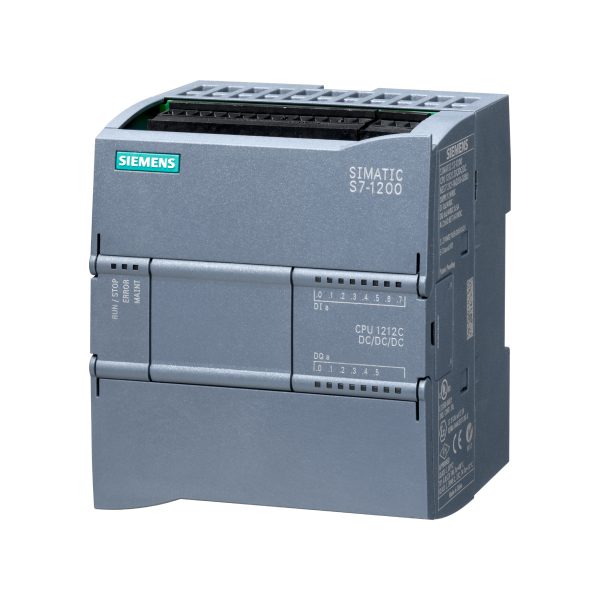
CPU S7-1200
The new controller, which has been developed as a successor to the S7-200, is characterised by slightly weaker parameters than the S7-300 family. Several CPU versions present in the family allow selection according to project requirements.
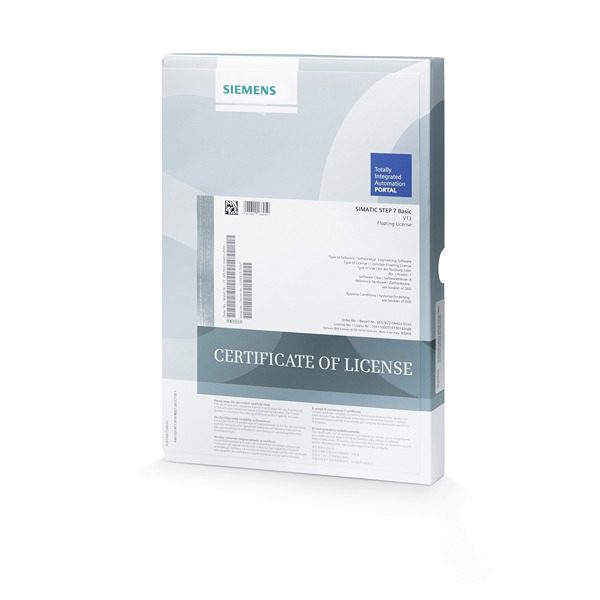
TIA Portal software
Totally integrated automation is a development environment that combines PLC (programming), HMI(visualisation) and startdrive(drive technology).
What will you be able to do after completing the course?
Regardless of your chosen career path, completing this course will contribute to your professional goals and enhance your competence in PLC programming. Learning about the programming topics presented is the first step to taking up a position:
Pamiętaj, że samo zapoznanie się z teorią to zaledwie początek. W przypadku tego kursu skupiamy się przede wszystkim na praktycznym zastosowaniu wiedzy. Dzięki temu będziesz mógł szybciej opanować praktyczne umiejętności, wystarczy, że poświęcisz czas na przerobienie materiałów i samodzielne ćwiczenia. To właśnie poprzez praktykę utrwalisz zdobytą wiedzę i nabierzesz pewności w programowaniu PLC SIMATIC S7-1200 w języku FBD. Naszym celem jest, abyś nie tylko zrozumiał teorię, ale także mógł ją efektywnie zastosować w praktyce. Dlatego zachęcamy do aktywnego uczestnictwa w kursie i regularnego ćwiczenia, co pozwoli Ci osiągnąć lepsze rezultaty i stać się pewnym i kompetentnym programistą PLC.
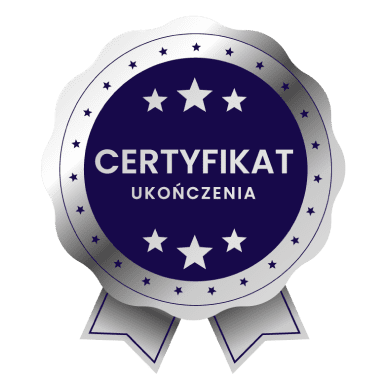
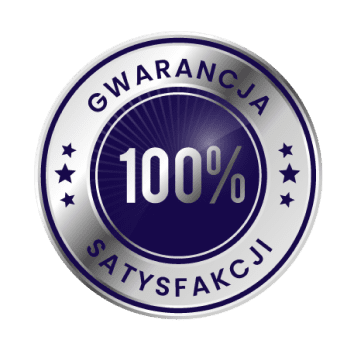
Guarantee
and certificate
If, after 14 days of purchase, you find that it is not for you, I will refund 100% of the course price. Upon completion of the course, you will receive a certificate in two languages - Polish and English.

Frequently asked questions
-
Do I need to have some basic knowledge of programming and PLC?
No. It's all in the course. We start from scratch.
-
Is it worth starting to learn with a Siemens PLC?
Yes. Siemens PLCs are in about 95% factories in Poland. The situation is similar in Europe. It is useful to have at least a general idea of this hardware and programming environment.
-
How long will I have access to the course?
Indefinitely.
-
Does enrolling in a course commit you to anything?
No. It is voluntary and at 100% for 0 PLN. It is possible to cancel at any time.
-
Is it worth learning PLC programming?
Everything nowadays lives up to automation to increase productivity and repeatability. Companies want to produce for 24 hours. You need machines and process lines to do all this. Someone has to program this, so you need PLC programmers. If you want to become a PLC programmer, this course would be a good way to start.
-
Why have I created a free course on PLC programming?
I think that anyone in the automation/electrical/mechanical field as well as pupils and students in these technical fields should familiarise themselves with this subject. Then you will be able to say whether this is for me. Whether I like it.
-
Who is this course for?
For people WITHOUT programming experience. For people who have no experience with Siemens PLCs. For all those who want to go step by step through the steps involved in the first commissioning of what is now the most popular PLC of the SIMATIC S7-1200 family.
Buy as a set and save
Select at least 2 courses from the list and the first free book item (three selections in total) and an automatic discount of 25% will be calculated in your basket.
If you want to find out more about a particular course, click on its name and the page will take you to its offerings.
Companies that have benefited from our courses




































Feedback from students
 Stanislaw
Stanislaw
What sets this course apart is the opportunity to acquire practical, concrete knowledge. Everything is clearly explained. Definitely recommended!
 Marcel
Marcel
After going through the course, I know what the components of the programming environment are and what to do step by step. Now I feel confident and know what I am doing
 Leon
Leon
Course delivered in a very accessible way. Contains a lot of interesting and useful information.
 Michael
Michael
I can honestly recommend the course. It is solid and factual knowledge. I will definitely be buying more.
 Victor
Victor
Thanks to the course, I have decided to go further in this direction. The goal is to look for a more challenging and better job
 Peter
Peter
The course prepared by Mr Tomasz is distinguished by its high level of content and meticulously prepared lessons. They are planned in a clear and sensible manner, making it easier to assimilate knowledge and return to the material if necessary. An additional advantage is the possibility of a free consultation.
 Nikodem
Nikodem
Definitely recommended! The facts themselves, no unnecessary dwelling on issues.
 Ignatius
Ignatius
This is my first course, certainly not my last. I am impressed with the substantive quality of the knowledge.
 Tymon
Tymon
Everything clearly explained, you can really learn a lot. Lots of practical information and examples to help you remember everything. In my opinion, it is worth using this form of learning because you can learn anytime and anywhere. It is practical and convenient.
You may also be interested in:
- Level:
The development environment used in the course
- Software:
Core unit family used in the course
- CPU:
A set of rules that are used to develop programme code
- Language:
Frequency converter (inverter) family used in the course
- Drive
1.199.00 zł
- Level:
The development environment used in the course
- Software:
Core unit family used in the course
- CPU:
A set of rules that are used to develop programme code
- Language:
Frequency converter (inverter) family used in the course
- Drive
999.00 zł
- Level:
The development environment used in the course
- Software:
Core unit family used in the course
- CPU:
A set of rules that are used to develop programme code
- Language:
Frequency converter (inverter) family used in the course
- Drive
999.00 zł
- Level:
The development environment used in the course
- Software:
Core unit family used in the course
- CPU:
A set of rules that are used to develop programme code
- Language:
Frequency converter (inverter) family used in the course
- Drive
1.199.00 zł
